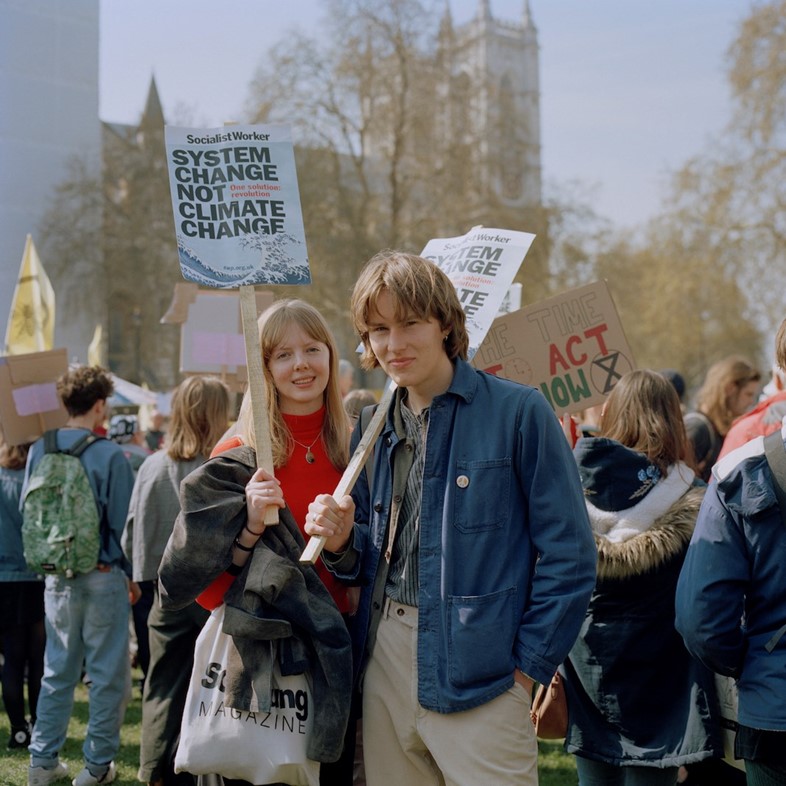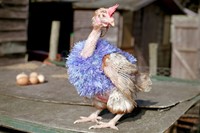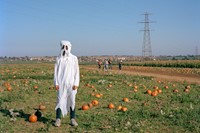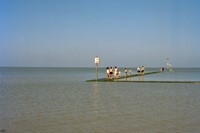Shot over the past 20 years, the photographer’s new book In-A-Gadda-Da-England documents pre-Brexit and pre-Covid Britain. “There is beauty in it. There is love in it. But there’s also darkness,” he says
Diane Arbus said that a photograph is a secret about a secret: that “the more it tells you, the less you know.” It might be reasonable to open documentary photographer Edward Thompson’s forthcoming book, In-A-Gadda-Da-England, and look for answers to England’s identity crisis. But answers aren’t necessarily what you’ll find.
Shot over 20 years, between 2002 and 2021, In-A-Gadda-Da-England is a portrait of a significant period in England’s history. Via English Defence League rallies or a Nigel Farage-fronted Brexit Party event, it documents the seeds of xenophobia and rise of nationalism; whether capturing Margate’s Miss Faversham beauty pageant, or a mother hanging up her washing, the book documents the everyday lives of British communities.
Between the ages of 20 and 40 – what the photographer describes as the “summer of [his] own life” – Thompson was simply shooting scenes around the country that seemed interesting to him. He didn’t realise the majority of the photos would go on to tell the story of the final years pre-Brexit, and pre-Covid; that the book’s release would coincide with a new epoch for England.
The book chronicles scenes in London, Birmingham, Devon, and Luton, but the majority are shot in Kent. As Diane Smyth explains in the introduction, Kent was a hotbed for the sentiments that swung the referendum ahead of our exit from Europe in early 2020. Kent is where migrants enter the UK after crossing the channel, and its string of coastal towns have seen substantial far-right activity; the people of Kent also largely voted to leave the EU in 2016.
In-A-Gadda-Da-England isn’t a book that draws conclusions – not on who we are, where we’re headed, or how we should feel about it. It’s taken Thompson several years to sequence, and the result is something vast and strange; inebriating and ambiguous. It is reflective of the tumult and complexity that has come to define England’s recent history, but suffused with hope and love all the same.
In his own words, Thompson reflects on place, time, and the nature of his image-making practice.
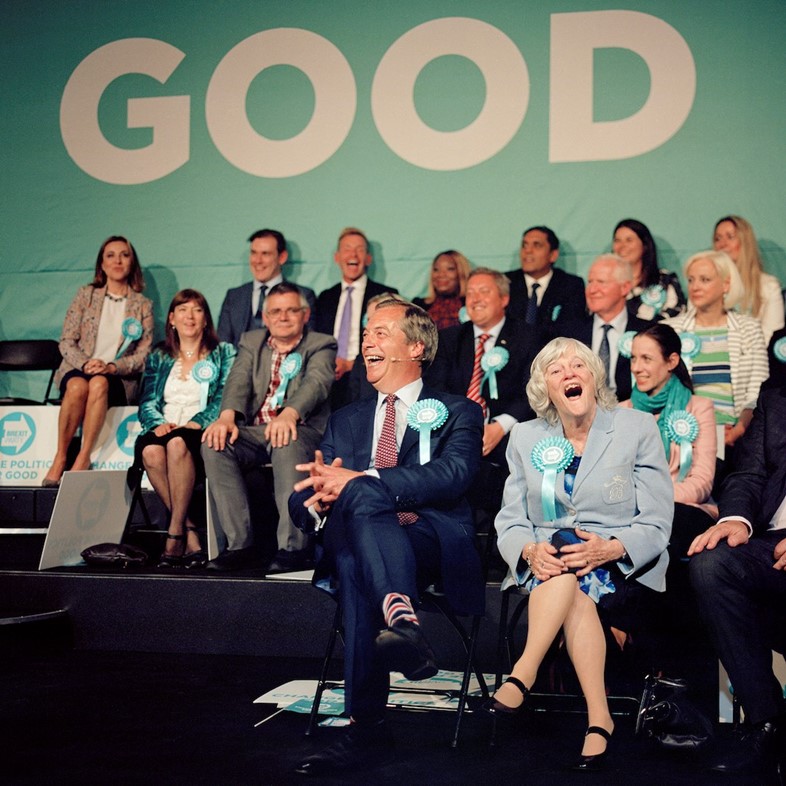
“The work in this book, it’s [been] such a long time coming. It’s a big, crazy picture of England over the past 20 years – work that I started making when I was a second-year student. And it’s not a storybook that takes you through a linear narrative. It’s not some dreamy love letter to our country. It’s like a fucking fever-dream-vision-quest of England; the England that exists in my head. It’s all real. They’re all documentary photographs. But the way it’s been put together, it’s a bit bizarre, and it’s a bit surreal. There is beauty in it. There is love in it. But there’s also darkness.
“I’ve covered some of the topics that became catalysts for Brexit: seeds of nationalism, seeds of xenophobia, seeds of kind of a kind of fictionalized history; a fantasy that a lot of people had about what England was, that it never really was. And that it’s never going to be. At the time, I was oblivious to how significant these moments would turn out to be.
“But there’s also a shot of my dad just before he died, clearing out the garage. There’s a photo of some graffiti where his ashes are scattered, saying ‘I love you forever’, with two little girls on scooters. There’s a saying in photography: sometimes, photography is a window. But sometimes it can be a mirror, reflecting the person who made the work.
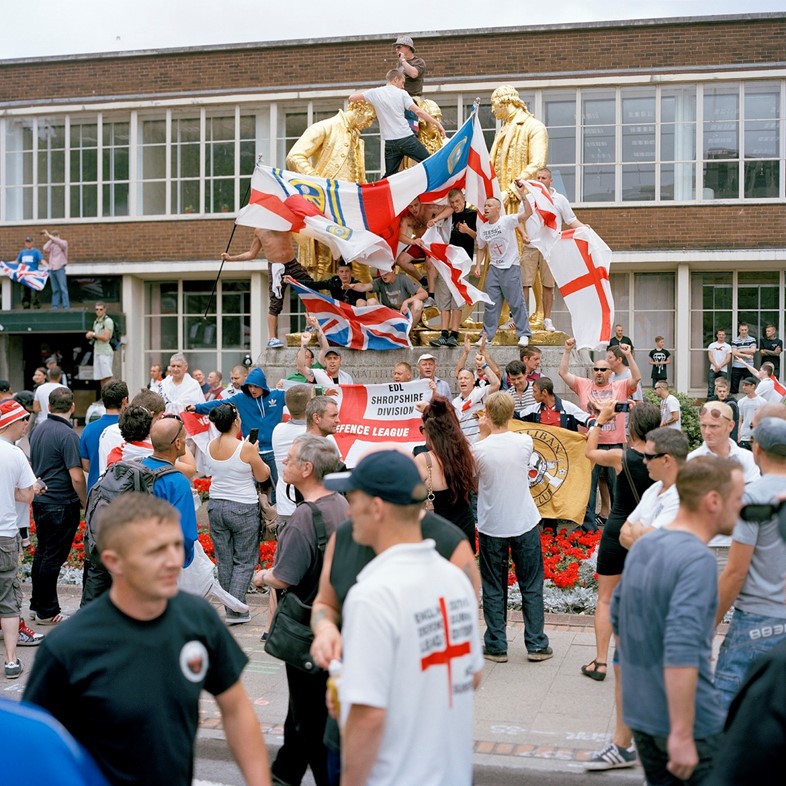
“The trippy thing is, viewing that ‘I love you forever’ photo in 2009, two years after my father’s ashes were scattered there, it was like a message from beyond the grave. But it’s opposite France, and France is obscured by mist in the background – so viewing that photo in 2016, after Brexit – maybe it becomes a love letter to Europe. Photographs may be fixed in time, but the meanings change. They change when you change; when you grow and you develop and you have different thoughts and beliefs and experiences.
“Other photos in the book have found new meaning in the present, too. There’s a shot of environmental protestors in London wearing full hazmat suits in 2012, which now eerily speaks to Covid. For some reason, I’ve always been drawn to that image; almost like I knew that it was going to be important. There’s a shot of the English Defence League climbing a statue in Birmingham in 2013, which now evokes the toppling of Bristol’s Edward Colston statue in 2020. Then there are photographs I’m still drawn to, but who knows what they’ll end up meaning later on.
“When people look at my images, part of me wants them to understand more about how we got to where we are in England, in the UK, right now. Another part of me just wants them to understand me a little bit. I think loads of photojournalists are probably nihilists. But I really believe in love. I really believe in life. I believe there’s things that are happening that we can’t touch on yet, we can’t see. And I think maybe, in a really crazy fucking way, when I capture those weird, serendipitous, or prescient moments in my photography – maybe they mean something. You know?”
In-A-Gadda-Da-England by Edward Thompson is out now.
